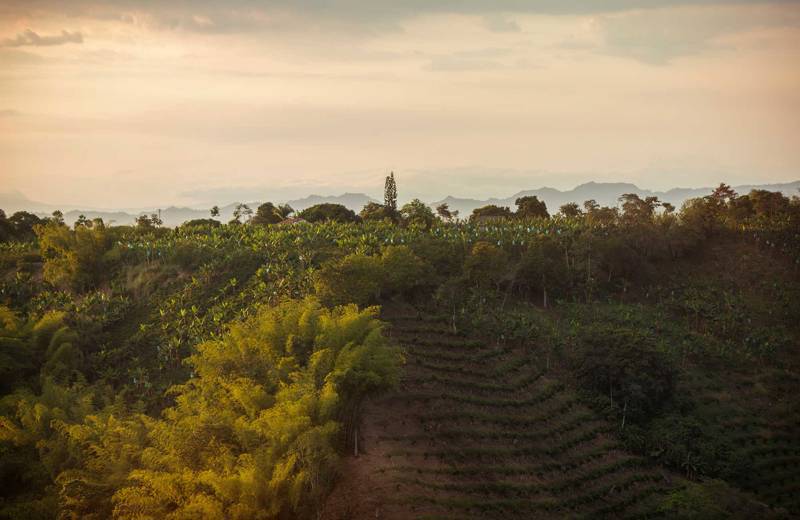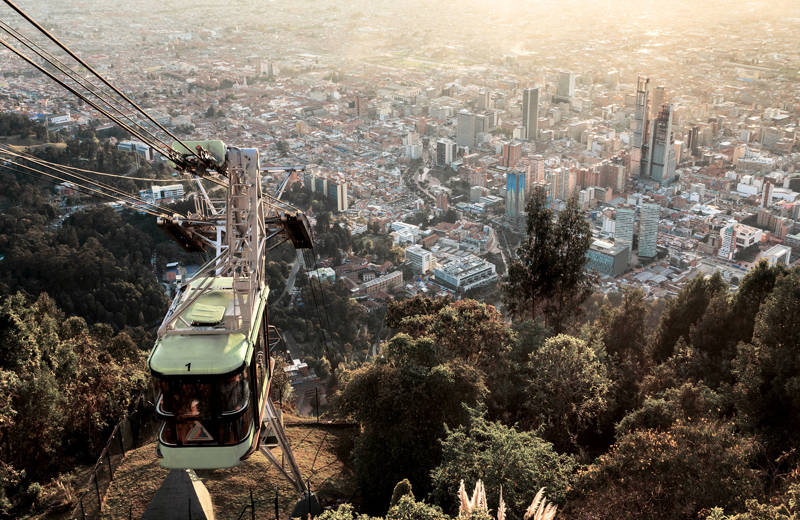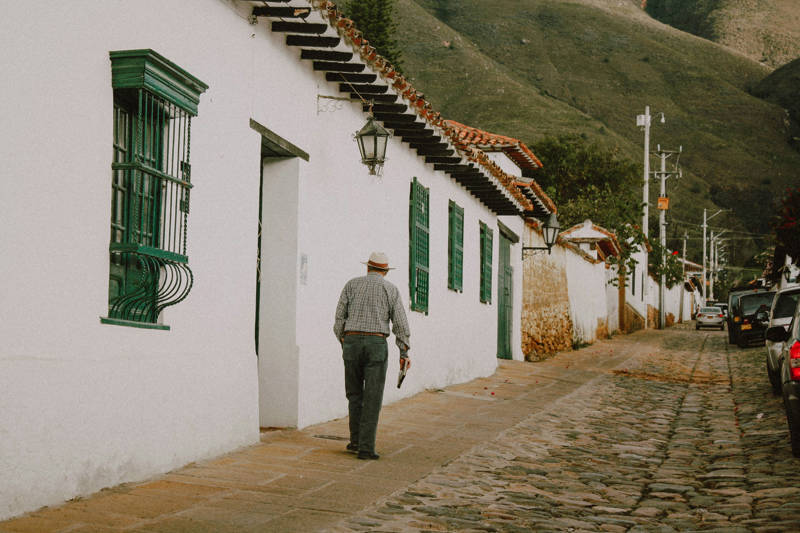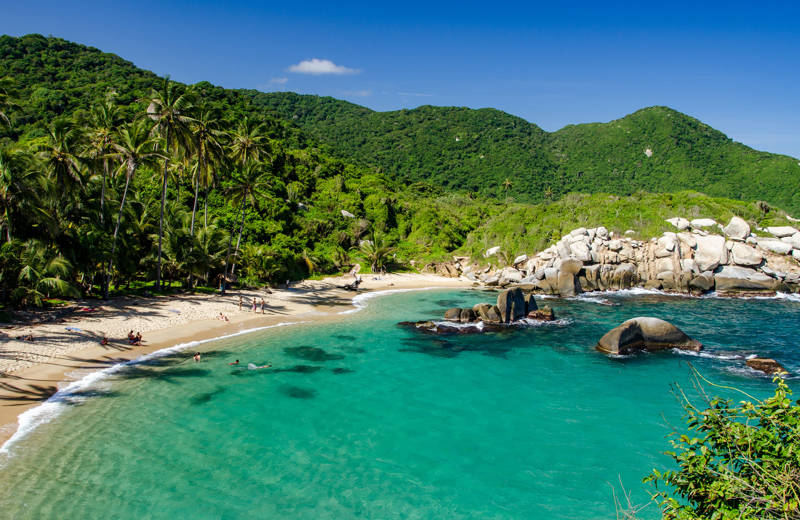Beyond the stereotypes: Colombia’s rich culture, nature, and history
Colombia is a country that has often been talked about by the media as a violent and dangerous place. In our eyes, that's a little unfair, since there is so much more to Colombia than what you’ve seen on Narcos and the news. From the Caribbean coast to the Andes mountains, from the Amazon rainforest to the colonial cities, Colombia has something to get all travellers excited. So read on to discover more about the amazing diversity of Colombia’s culture, nature, and history, and why you should visit this beautiful country.

The Amazonas region, spanning several South American countries including Colombia, Brazil, Peru, and Ecuador, is one of the most biodiverse places in the world. The large, dense rainforest and rivers are home to many unique animals like the jaguar, macaw and many more.
Here, the mighty Amazon River finds its way through the world's largest tropical rainforest, giving life to all the orchids and kapok trees that make this jungle such a special place. Whether you're trekking with a local guide, riding a boat along the waterways, or spending time among indigenous communities, the Amazonas region is one of those places every traveller has to visit once in their life.
Let's begin with Colombia's nature - it's more than just the Amazon Rainforest
Colombia is filled with gorgeous forests, mountains and national parks.
First up is the Amacayacu National Park in the middle of the Colombian Amazon. It's a real hotspot for biodiversity and promises an amazing adventure. Imagine exploring dense jungles filled with monkeys and exotic birds, and winding rivers where you can get up close with all sorts of wildlife. A local guide can tell you everything about the area and all its inhabitants - big and small. Keep your eyes peeled for jaguars, river dolphins, and colourful macaws while you're being guided through the jungle.
The Tatacoa Desert is a completely different world compared to the big rainforests of Colombia, looking like a landscape straight from Mars with large orange "rock" formations covering the 330-square-kilometre area. We say ''rock'' because the ground is actually made up of hardened soil. There are two main areas - the red desert and the grey desert, and both are worth a visit. We suggest hiking through Tatacoa either in the morning or at sunset to avoid the extreme heat. If you want to, you can stay overnight and camp under the open desert sky - moonlight hike anyone?
And finally, we need to mention the Chingaza National Park, with its misty mountains, ancient forests, and clear lagoons. Chingaza is a great daytrip from Bogota. Hiking through here, you'll come across different ecosystems, from the high-altitude grasslands of Páramo to dense forests, each one full of amazing plants and animals. There are several trails you can take, but in our opinion the hike to Lagunas de Siecha, three glacier lakes at an altitude of about 3600 metres, is the best. On the way here the views are amazing, and you'll see many unique plants and animals, like the hundreds of frailejones shrubs you'll only find in Colombia, Venezuela and Ecuador.

Colombia has impressive towns and cities, full of colonial architecture and great food
Colombia's towns and cities are just as lively and varied as its natural scenery, each one with its own special mix of history, culture, and character that'll steal your heart. Let's start with Cartagena – a coastal beauty in the north of Colombia that is famous for its colonial-style buildings, cobblestone streets, and vibrant colours. Take a walk through the historic Old Town, where ancient forts and churches tell tales of the city's past, or enjoy the sunshine on one of the stunning beaches of Bocagrande.
Then there's Bogotá, the busy capital in the northern Andes Mountains. It's a lively city where modern skyscrapers blend in with old plazas and busy markets. Make sure you check out some of the museums, like the National Museum, to get a better understanding of Colombia's culture and history. There's even a museum dedicated to Simon Bolivar, who is known as the liberator of most of South America. We don't want to make things too boring though, so definitely also spend time in the trendy neighbourhood of Chapinero with its LGBTQ+ community, hipster cafes, and microbreweries. It is also home to some of the best nightlife in the city, with clubs, bars, and live music venues. For something completely different, visit Zona Rosa (also known as Zona T), an upscale and fashionable district with many luxury hotels, restaurants, and shopping malls. It's also a hotspot for nightlife, especially in the area around the T-shaped pedestrian zone.
In comparison to the sometimes hectic and busy Bogotá, Medellín almost feels like a town, with its mountainous setting and lack of many high-rise buildings. It might have a dark history, once being the home of the infamous Medellín cartel, but in today's version of the city this seems like a distant past, with lovely parks, street art and great public transport to make your way around. If you do want to know more about the cartels, drug trafficking and the fascinating figure that was Pablo Escobar in particular, we recommend the Casa Museo Pablo Escobar where his life-story is told by his own brother.
In South America, a city barely counts as a city if it hasn't got a cable car - and of course Medellín has one too. Unlike in many other places, this one wasn't built for tourists, but as a means of public transport for the people living up in the hills surrounding Medellín, as the roads up were too narrow for a bus service to run. This means there are four cable car lines on the public transport system, each with multiple stations dropping you off right in the middle of busy neighborhoods.

We're not done yet! Colombia is massive, so there is also a lot to discuss about the different cities. Our next stop takes you to the Amazon and the city of Leticia. Compared to the three above it's a tiny city, but it's one of the biggest settlements in the Amazonas region. In Leticia, the Amazon River meets Colombia, Brazil, and Peru and it's a border town, stretching into the Brazilian town of Tabatinga. You can go on some epic jungle adventures, meet indigenous communities, and be blown away by the incredible wildlife.
If you happen to be in Colombia in November, and want to experience something truly special, visit the El Pirarucú de Oro - the International Festival of Amazonian Popular Music - with the international part meaning it's an important cultural celebration of all countries sharing the border at Leticia, and it makes the town come to life.
If you're more into small towns and rural areas, we suggest a visit to Villa de Leyva – a charming colonial town that feels like it's frozen in time. With picturesque cobblestone streets, whitewashed buildings, and a lovely central plaza, it's a peaceful place to spend a couple of days. We loved getting up early and wandering the almost deserted streets on a quiet morning. The town is completely surrounded by breathtaking scenery and filled with cute cafes and artisan shops. It's a nice change of pace from the rest of Colombia.

There are some pretty great beaches in Colombia too
While it might not be your #1 reason to visit, Colombia's beaches and islands are hard to resist, with their perfect sands, sparkling blue waters, and colourful underwater worlds. If you only have time for one coastal experience, we recommend Tayrona National Park, where dense jungles meet the Caribbean Sea, creating a scene right out of Pirates of the Caribbean - filled with hidden beaches and secret coves. There are many trails to hike, and on the way you'll uncover gems like Cabo San Juan and Playa Cristal, where you can snorkel above vibrant coral reefs and chill while enjoying the ocean breeze.
If island life is what you're after, hop aboard a boat and head to the Rosario Islands, a dreamy group of small isles just off the coast of Cartagena. Picture-perfect with their crystal-clear waters, they're a haven for snorkelling, diving, and basking in the sun. Nearby Isla Barú offers a more relaxed vibe with its palm-fringed beaches and beach bars serving up fresh seafood and fruity cocktails. There are plenty of great hotels on the island, should you want to treat yourself at the end of your trip.

Activities in Colombia - from trekking to diving and everything in between
Colombia is perfect for the active traveller wanting to try different things, from multi-day treks to exploring the depths of the Caribbean Sea. Colombia isn't famous for the best diving locations, but there are some real gems here, especially along the coast of Cartagena where you can see a lot of underwater life, from vibrant coral reefs to graceful sea turtles. We work with a dive centre in Taganga, where you can get your certificate at Colombia's only five-star PADI centre.
Those who love a good challenge and wouldn't mind a multiday trek, should take on the Lost City Trek, an exciting journey through dense jungle and local villages to reveal the ancient ruins of Teyuna, hidden away in the Sierra Nevada mountains. On the way you'll see what life is like in the remote villages of Colombia.
If you'd rather take it a little easier, but do want to open the doors to local culture, there is the opportunity to learn a little Spanish. It will come in handy in Colombia, but certainly also on your next trip to Latin America, as we're sure you'll want to go back again and again. Check out our Spanish language courses in Cartagena, which is one of Colombia's most charming cities. You can choose between standard and intensive courses, and opt between different accommodation options with either a hostel, or a homestay with a local family - the best way to practice your new language right away!


